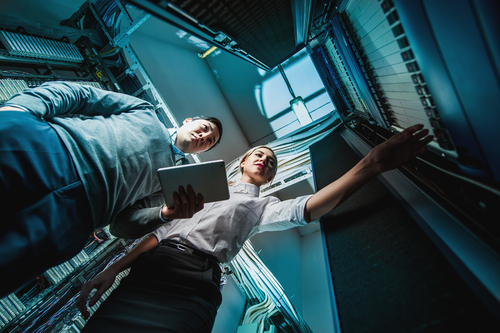
Contrary to popular belief, it isn’t just Al Gore who thinks the earth is warming up as we are all already seeing the effects on a global scale. Global warming is a real thing and, unless we really do something about it soon, we could be heading into a very dark tunnel indeed from which we will not be able to escape.
Everyone can contribute to a greener future that will ensure there will be a habitable planet for the next generations to inherit, and this includes businesses with data centers. If your business uses or runs one, you are expected to be responsible enough to ensure its sustainability.
What is Data Center Sustainability?
Irrespective of what it stands for, a sustainable system helps with the preservation and promotion of the long-term wellness of our planet’s environment, its inhabitants and its natural resources. It cuts down on – or completely eliminates – waste, the emission of greenhouse gases and spreading of toxic pollutants.
Similarly, sustainability can also be implemented in a data center by using materials and processes that minimize or eliminate its negative effects on man and planet. The implementation applies to all the aspects of the center: from its construction to its implementation and running; everything from basic design, the site’s selection, the choices of hardware to be used, the power that will be needed to light it all up, the methods used to cool and air the servers and the subsequent administration of it all, must be taken into consideration.
In order to achieve optimum sustainability levels, the whole infrastructure should be built on, and from, materials that are fully sustainable – at all levels of their lifecycle. At every stage, all the materials used should be as less harmful, to both man and planet, as possible.
How Can it be Done?
A business that looks to building a sustainable data center can do so by following these three basic principles:
- Whenever possible, the latest technology should be used. The business should, for example, use the latest software that allow for better computer power usage and optimization of the server utilization in the data center. BI (Business Intelligence) software can be used to plan, analyze and administer energy consumption. Employees can contribute to the effort by using the latest communication and collaboration tools to cut down on travel costs.
- Implementing proven best practices helps the effort. Businesses can adopt practices that have been implemented in other data centers and customize them to fit their own architecture. Incentives should be given to encourage efficiency and sustainability in day-to-day operations. Businesses should also invest in knowing their own workload habits and then customize their server platforms to meet the requirements while cutting down on wastage.
- Recycle, recycle and recycle. Businesses should always be conscious about recycling and, whenever possible, should use renewable resources. In case there is a shortage of knowledge about green practices and recycling in the business itself, efforts should be made to import it through participation in industry environmental groups to learn and import the best practices of others and contribute by sharing any in-house knowledge to find out if there are any improvements that can be made on them.
What are the Advantages to Businesses?
Businesses that decide to build their data centers in a sustainable way can enjoy direct and indirect advantages, apart from doing some good and helping to ensure a greener planet.
Some of these advantages include (but are not limited to):
Cost Reduction: when a data center is sustainable, it means that it is less expensive. Among the factors that contribute to cutting costs are less consumption of electricity and water, as well as reduction of operating and overhead costs.
Apart from these direct cost cuts, states and the federal government offer tax breaks and other financial incentives to businesses that help reduce the burden on national power grids and use natural resources responsibly.
Increased Profits: a business that strives to achieve a sustainable data center does so by improving its business processes. This means, they will create or implement ways of doing them that will consume less energy, require less resources and need less human intervention and administration. This means they will increase their profitability by creating the best services or products with the least amount of carbon footprints.
Recognition: as the world becomes ever more environmentally conscious and every effort to go green is not only encouraged but also championed, a business with a sustainable data center will get the recognition it deserves.
The business’ customers will be happy to deal with an entity that isn’t in the market solely to make money. They will feel like they are a part of the global conservation effort by encouraging and working with a green business.
With data center sustainability, businesses can achieve the better of two worlds: become more profitable while helping to create a safer and happier world. There simply is no downside.



















